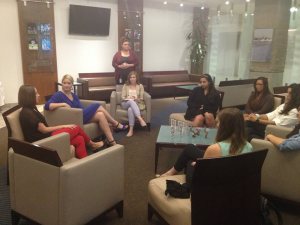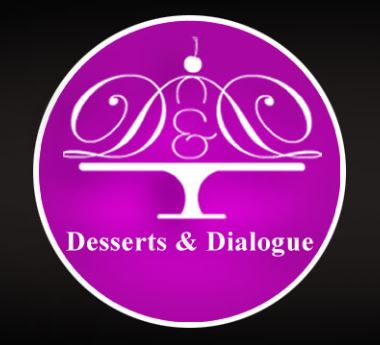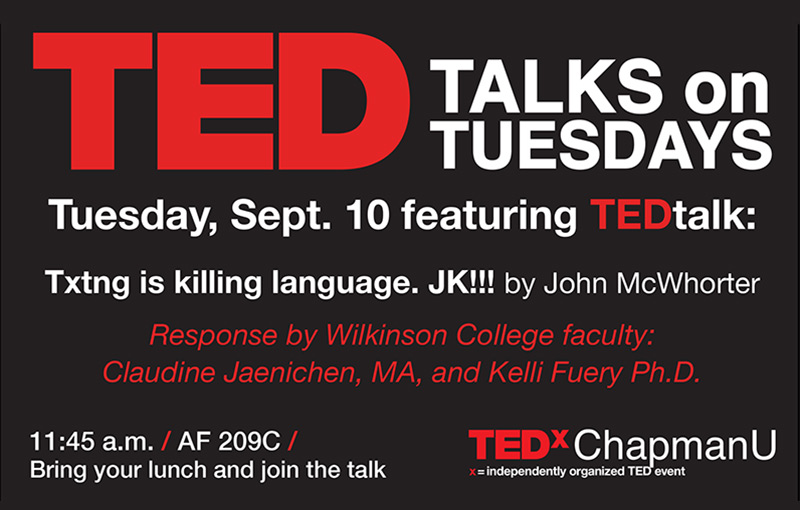This summer I had the unique privilege of working at the first Western regional conference for HighEdWeb. This inaugural event, hosted by Chapman University, opened my eyes to the incredible work, dedication, and strategy that goes into creating an online community for higher education establishments.
HighEdWeb West, the inaugural conference
For those of you unfamiliar with this event, HighEdWeb is a conference for higher education web professionals to gather, collaborate, discuss, and inspire. There are four other regional conferences throughout the East Coast and a larger annual conference every October. HighEdWeb West brought together a unique group of innovators who shared their expertise through a series of presentations and social events over the course of 1.5 days. The event was incredibly successful, clearly illustrated through the collection of tweets and pictures posted throughout the conference using the hashtag #hewebwest. Feel free to read through the Storify to see the awesome conversations that were generated by this event!
I had the opportunity to attend sessions such as accessibility, project management for web professionals, social media, blending personal with professional, and building online communities. Hearing these individuals speak with such enthusiasm and present their work was incredibly inspiring. It was a privilege to observe the professional discussions, but to also join in.
A student’s perspective
During breakfast, Chancellor Daniele Struppa explained how educators and administrators have an obligation to their students to stay current with the changes in technology. Between cracking a few jokes, he emphasized that although these technologies may seem new to the older generations, tools such as Facebook are old news. The need for better communication and online engagement between higher education establishments and their communities has become a vital component to the identity and success of the organization – it cannot be ignored or postponed.
From the perspective of a current student, I agree with the Chancellor wholeheartedly. The way Chapman has embraced social media and overall engagement online with students has blown me away. The focus on conversation and collaboration invites students to voice their opinions, share their experiences, and learn about the university. It is beyond exciting when Chapman’s Twitter “favorites” or replies to your tweet. They also feature student photography of campus with their their “#CaptureCU” tag on Twitter and Instagram. Sharing and resharing the photos with the entire community allow for more people to appreciate the original work.
Geeking out on social media
One of the most exciting parts of this conference for me was the social media lightening rounds. I work on Chapman’s web and interactive marketing team, and tend to “geek out” over anything related to social media marketing and strategy. My supervisor, Sheri Lehman, presented first about changing the way universities and schools communicate online with their students. The emphasis on asking for contributions, encouraging discussions, and understanding one’s audience stood out to me. She explained that higher education web professionals need to “trust the user and shake their hand.”
I have the advantage of being on the other end of this and I could not agree with Sheri more. In the current age of information sharing online, people will post about almost anything – positive and negative. Sometimes, they just want to express their feelings. Other times, they want a response. I believe the latter to occur more frequently. When a student raves about what an incredible experience they had at the university upon graduating, responding by thanking them and congratulating them on their accomplishment fosters a positive relationship between the university and that student.
Sheri focused on humanizing the university by talking with the community, not at it. Maybe a disgruntled student has a negative experience with parking and complains via Twitter. Using the framework Sheri presented, the school can respond with an explanation of steps they are taking to to remedy the situation. This reassures the student and instills confidence in the organization as a whole. Being acknowledged, heard, and respected online is key for higher education organizations.
Beyond social media, the speakers of HighEdWeb West touched on every aspect of the growing technology in our society and how it relates to higher education. I have a whole new appreciate for the work, passion, and commitment it takes to create a strong online community after attending this conference. This was an incredible event and I hope that there are many more HighEdWeb West regional conferences in the future.
 The speakers were Tracy Chambers ’11, TOMs Marketing Coordinator, Jeff Whitlach ’08, Creative Director at Genie Den, and Sheri Lehman ’11, Interactive Marketing Specialist at Chapman University.
The speakers were Tracy Chambers ’11, TOMs Marketing Coordinator, Jeff Whitlach ’08, Creative Director at Genie Den, and Sheri Lehman ’11, Interactive Marketing Specialist at Chapman University.




